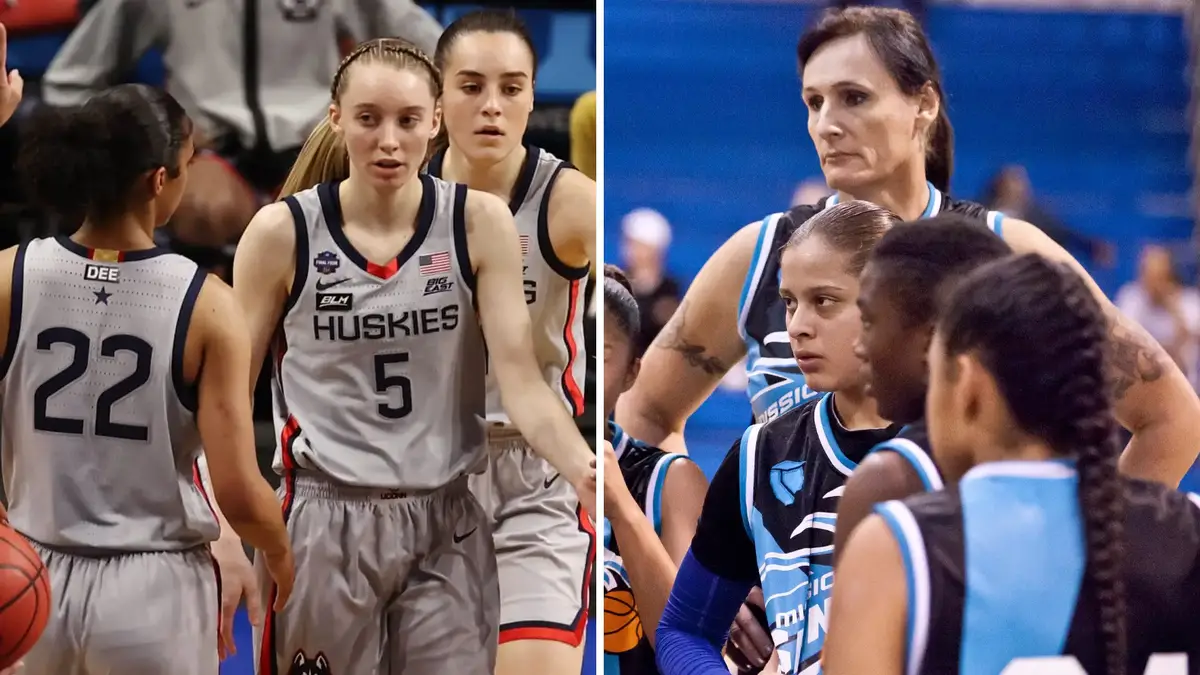In a small town that rarely makes national headlines, a girls’ high school basketball team has suddenly found itself at the center of a heated national conversation. The team’s decision to forfeit a game rather than play against a team with transgender athletes has ignited a fierce debate about fairness, inclusivity, and the evolving landscape of youth sports.

The controversy began quietly enough, with the team preparing for an important match. As game day approached, it became clear that the opposing team included two transgender girls. After several days of intense discussion among players, parents, and school officials, the team announced their decision: they would not play the game. This decision, they explained, was based on concerns about competitive fairness and safety, not discrimination.
The reaction was immediate and polarized. Supporters praised the team for taking a stand on what they see as an issue of fairness in girls’ sports. “This isn’t about excluding anyone,” said one parent, who requested anonymity. “It’s about ensuring that girls have a level playing field. Biology matters in sports, and ignoring that undermines the very foundation of girls’ athletics.”

On the other side, advocates for transgender rights condemned the decision as a form of discrimination. They argue that transgender girls should be allowed to participate fully in sports, just like any other girls. “Transgender youth are already marginalized in so many ways,” said a spokesperson for a national LGBTQ+ advocacy group. “Excluding them from sports sends a harmful message that they are not welcome or valued.”
The school district found itself caught in the middle, struggling to balance competing values of inclusivity and fairness. The district issued a statement affirming its commitment to providing a safe and supportive environment for all students, but stopped short of taking a clear position on the specific issue of transgender athletes in girls’ sports. “This is a complex and evolving issue,” the statement read. “We are committed to ongoing dialogue and to finding solutions that respect the rights and dignity of all our students.”

As the story gained traction, it attracted national media attention, with commentators and pundits weighing in from all sides. Some saw the team’s decision as a brave stand for fairness and integrity in sports. Others saw it as an unfortunate and misguided act of exclusion. Social media exploded with opinions, hashtags, and heated exchanges.
The girls on the team found themselves thrust into the spotlight in ways they never anticipated. “We just want to play basketball,” said one of the team captains in a tearful interview. “We never wanted to hurt anyone. We just want what’s fair.”
As the debate rages on, it is clear that this issue is far from resolved. The question of how to balance fairness and inclusivity in youth sports is a deeply complex one, with passionate arguments on both sides. What is certain is that this small-town basketball team has sparked a conversation that will likely shape the future of youth sports for years to come.
In the meantime, the girls continue to practice and play, determined to focus on the game they love, even as the world around them debates the principles and values that underpin their decisions. Whether seen as courageous defenders of fairness or as unwitting participants in a larger cultural battle, they have become symbols of a society grappling with profound questions of identity, equality, and justice.





